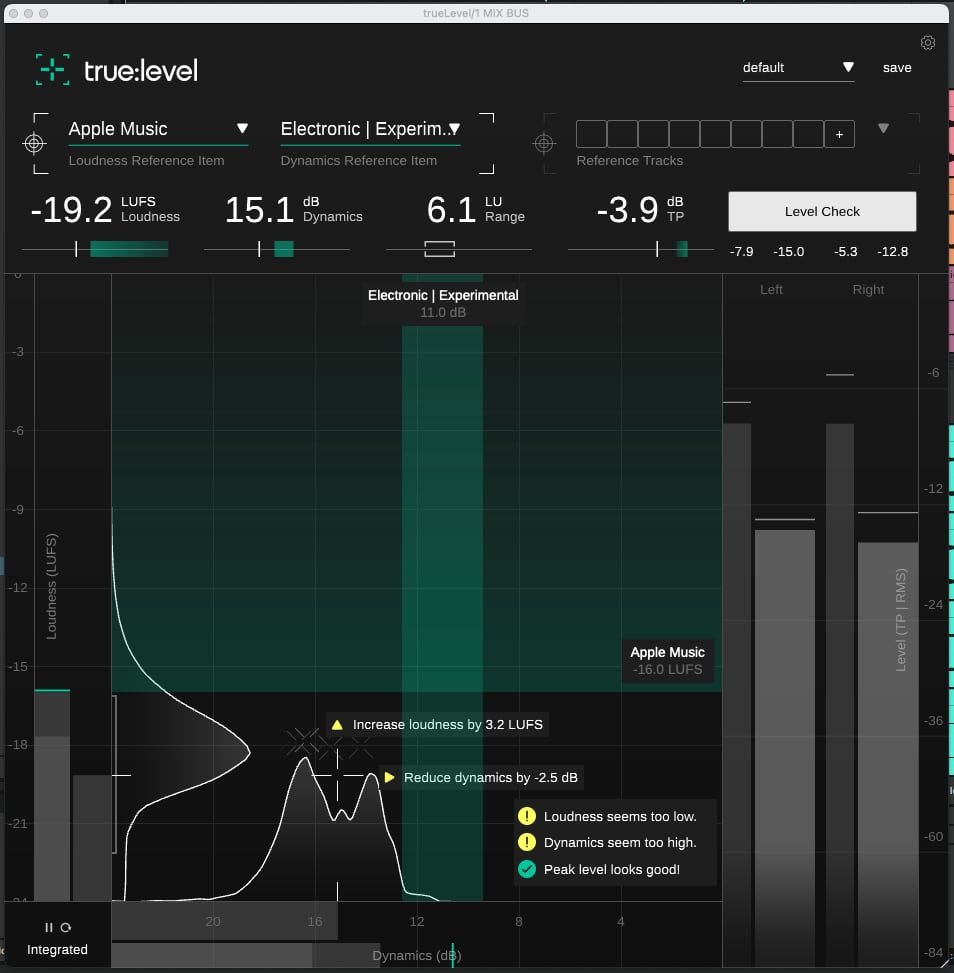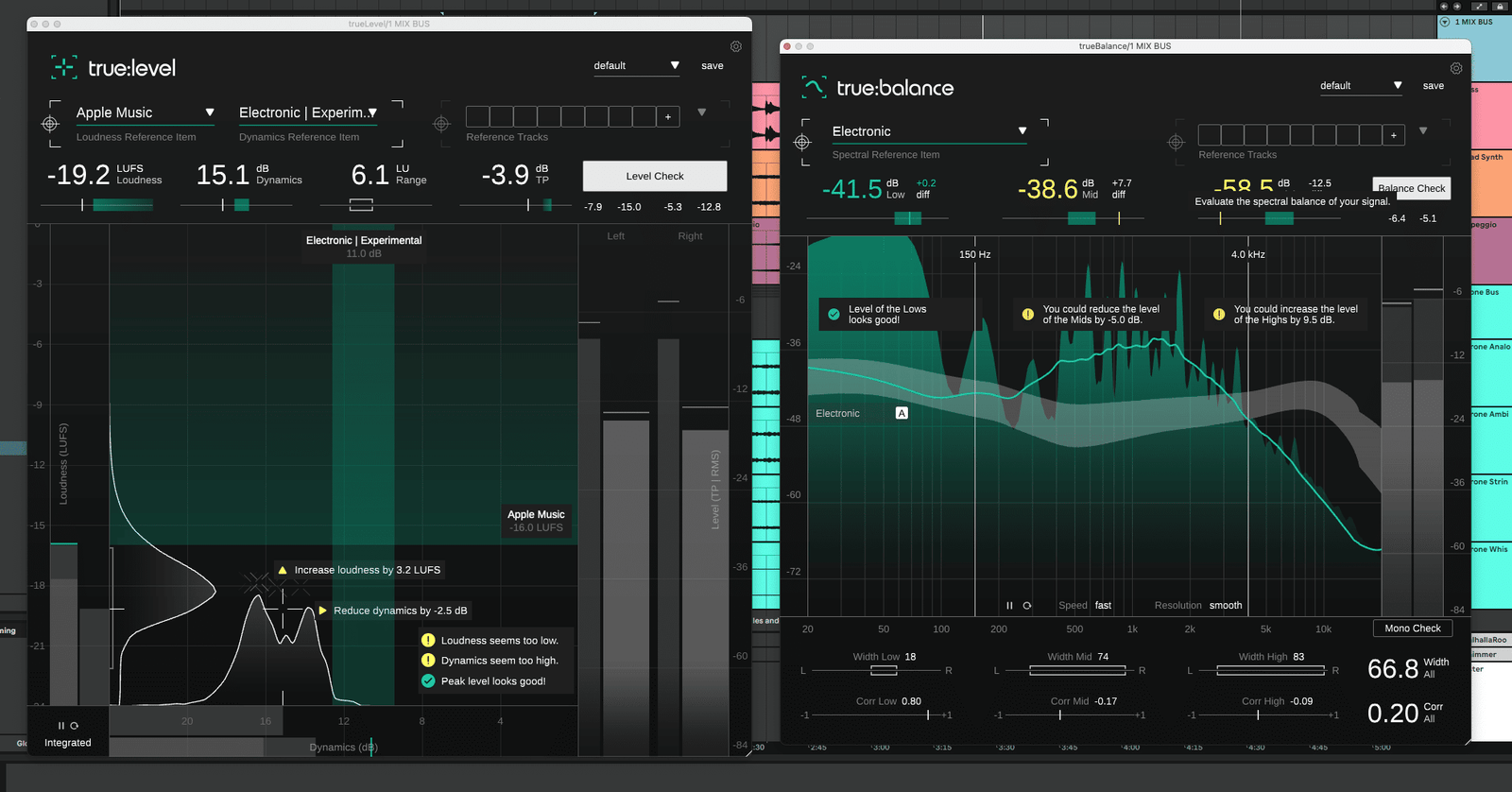Sonible have just released two new metering plugins, the true:balance and true:level. Both have distinct metering functions, but, like all meters are intended to show you what is going on with your music, rather than affecting the sound in any way.
These meters are optimised for working with a full mix on the master bus. They aren’t really intended to be used per instrument, so they work best at a mixing or mastering stage.
Full disclosure: I have received complementary copies of these Sonible plugins and been asked to review them. Sonible have not asked to view the contents of my blog, and all thoughts here are mine.
true:balance

First up, the true:balance offers a look at the EQ and stereo spread of your track. The GUI is split into several key areas: the top offers your either a series of pre-determined musical genres to chose from, or the option to load a variety of reference tracks.
When you start to play your track, it’s frequency balance appears as a thin green line. Your chosen reference point – i.e. the genre of music you chose or the reference track you uploaded appears as a thicker white band.
The idea is to adjust the balance of your mix to try and match your track to sit within the white line. OF course, each track can (and should) sound what it should sound like. But it’s a useful guide for fitting your track within either established genres, or aiming to replicate the sound of an existing track.
At the bottom of the GUI are correlation controls monitoring stereo width and phase. Again, these should be corrected within a separate plugin, but they give you an idea of any phase issues within your mix.
true:level

This plugin offers a GUI similar to that off their recent smart:limit plugin. What you are getting is a a graph in the horizontal axis for dynamic range – the difference between the loudest peaks and the quietest sections.
The vertical axis has a graph which measures loudness in LUFS. Your traditional decibel counts barely get a look in here. This is all about how loud a track is perceived to be.
At the top of the plugin are two drop-down menus, allowing you to select either the target destination for your audio – Spotify, Apple Music and other professional standards are here. I don’t know if sonible intend to update the plugin with new settings every time these standards change. You can also define your own settings if you wish.
You can also chose a genre of music or upload reference tracks for the plugin to analyse and compare your mix to. Comparing a mix to an existing, professionally mastered track is always worthwhile and educational.
As you use the plugin, cross hairs appear in your graph and track your mix’s loudness and dynamic range. Where the horizontal and vertical green bars cross is the sweet spot for your chosen audio standard.
The level check button produces two floating tool tips telling you if you need to adjust the dynamic range or adjust the perceived volume. How you do this, through mixing, compression, saturation and limiting is up to you.
conclusion
Both plugins track the incoming audio effortlessly and provide really excellent feedback for a mixing or mastering engineer. It really allows you to get into understanding what your audio is doing across the frequency range.
They come in all available formats, for Windows and Mac and are native for Apple Silicon too. The GUIs are clear, readable and entirely scaleable.
I’m not sure I’d recommend them to a hobbyist musician, but for professional engineers, these are highly recommended tools.
Find out more at sonible.

